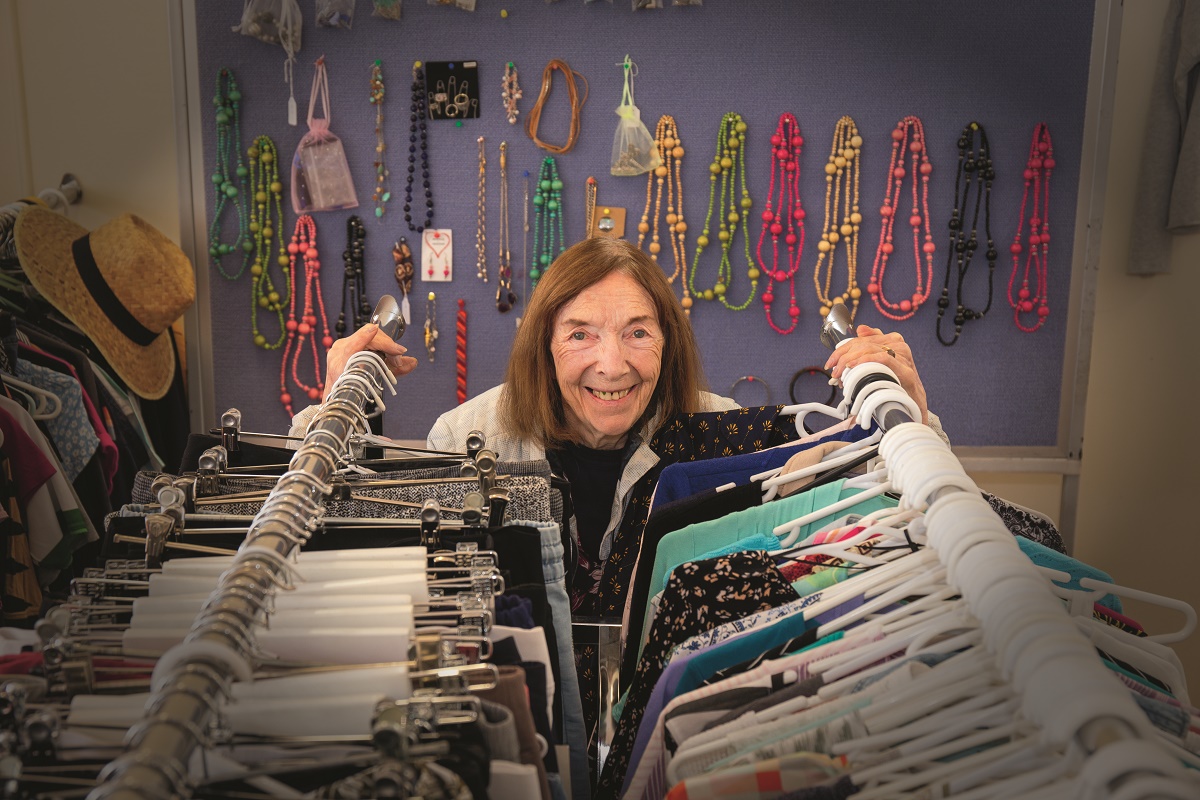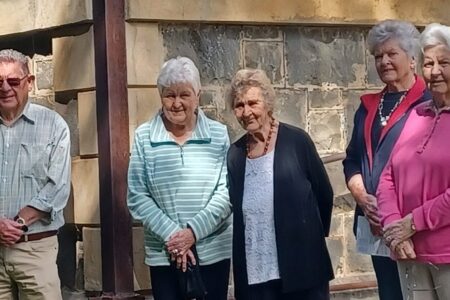By Marina Williams
For 150 years Scoresby Uniting Church has witnessed much change in a neighbourhood that has evolved from a fledgling rural township founded in the 1870s to a busy outer Melbourne suburb.
On April 14, the history of the church, and the enduring faith of its community, was celebrated with a special mass and anniversary events that included a communal meal within the sun-dappled church grounds.
Church secretary Lillian Brown says Scoresby Uniting Church has been pivotal in shaping lives, and providing support and guidance to people through the years.
“Many of our members have decades of attachment to the church, including my family, and we have more recent ones, and it was wonderful to see so many people attend the celebrations,” Lillian says.
“We were especially happy to have had a beautiful sunny day, as it meant we could take the celebratory meal outside and share with the wider community, many of whom would not have come through the church doors.
“The celebrations were about people and community.”
Records state that the church opened as the Scoresby Wesleyan Church on April 5, 1874, officially becoming part of the Uniting Church in 1977.
“It is the oldest continually used building in the City of Knox in Melbourne’s southeast,” Lillian says.
“Many shops have been built around the church grounds, resulting in our location in the heart of Scoresby village.
“The church has always been there, having the same purpose.
“On the outside, it is pretty much what it was when built and, in 1977, the stained-glass window over the arched door was changed to incorporate the Uniting Church symbol.”
The church is constructed from clay dug from what is now a recreation reserve.
“Scoresby was a rural area of farms and orchards, and to build the church clay was dug from nearby, transported by horse-drawn dray to the Oakleigh Brickworks, fired into bricks and then taken back to Scoresby,” Lillian says.
“It was completed in time for Easter service.
“To this day, the site of the church on the busy north-east corner of Stud and Ferntree Gully roads remains central in the community.”
Plans for the church began when orchardist William Horner and his family moved to Scoresby in 1866.
For many years they worshipped at the Black Flat Wesleyan Church in Glen Waverley.
“Reverend J. B. Smith, the Brighton Circuit minister, was known to the Horner family and offered to conduct services at Scoresby,” Lillian says.
“These started in the Horner home and later moved to the Scoresby State School after it opened in 1872.”
That same year permission was given to build the church, with a half-acre of land opposite the Horner home purchased for £6/5/-. Construction cost £265.
“Clay provided the foundations for the building, but the church is built on family and community,” Lillian says.
“It has brought (our family) conversation, community, and home, which we have enjoyed and valued to this day.”

Secretary Lillian Brown at the church’s op shop and drop-in centre.
Attending the celebrations were “members from years past who no longer live in Melbourne”, local and federal government representatives, members from cluster churches and “children and grandchildren from members who have passed on”.
Michele Berton, a member of the Scoresby congregation, coordinated and led the service, which opened with a Welcome to Country.
Fellow members delivered a history of the church, a faith journey and Bible readings, and sang in the choir.
The church’s only fulltime minister, Rev John Bottomley (from 1974-1982), delivered the sermon.
“During John’s ministry, the congregation was challenged on social justice issues and the role of the church in modern society, topics that continue to challenge us today,” Lillian says.
A particularly poignant part of the day, Lillian says, was hearing from an elder from the Wurundjeri Woi Wurrung Cultural Heritage Aboriginal Corporation.
“He spoke about his people’s journey on looking after the land on which the church stands,” she says.
“He said he hoped that one day Aboriginal and white people will be able to walk forward on an equal footing to care for Australia together. It was very moving.”
Lillian says that although membership has fluctuated over the years (records show membership was eight people in 1872, growing to 60 families in 1988), Scoresby is proud to have offered continuous service to Christian faith, all while adapting to cultural and social change.
Today it is part of the Knox Uniting Church Cluster, formed with the four other Uniting Churches in the region – Bayswater, Boronia Road, Ferntree Gully and Rowville.
“Even with just 23 members today we continue to serve in our community,” Lillian says.
“Services continue twice a month with the support of a shared ministry team, visiting speakers, and the active involvement of the congregation.”
Community programs delivered over the years include an opportunity shop (which closed during COVID-19), emergency relief support, and a drop-in centre.
“When people find their faith or need support, we are here for them, but it is a challenge to bring people in.”
On some Sundays a ‘café church’ is held in the adjacent hall, not in the church.
“It’s about taking the church to the people,” Lillian says.
“We have tried, unsuccessfully, opening the church and removing anything that might strike the public as ‘churchy’ and inviting people to take time out of their busy day to think and meditate.”
The drop-in centre is run with the support of volunteers from across the cluster.
“People can pop in for a cup of coffee and a chat, borrow a book or even buy some second-hand clothing,” Lillian says.
“We have not been overrun with people dropping in, but there is always someone.”
She says the congregation remains hopeful about the church’s future.
“COVID has changed how people interact, and I think people remain wary of being physically close to others,” Lillian says.
“Our congregation is just normal people having a good time, and we want to continue to share that with others.”


